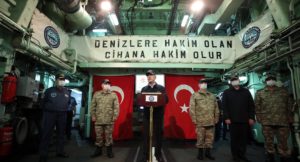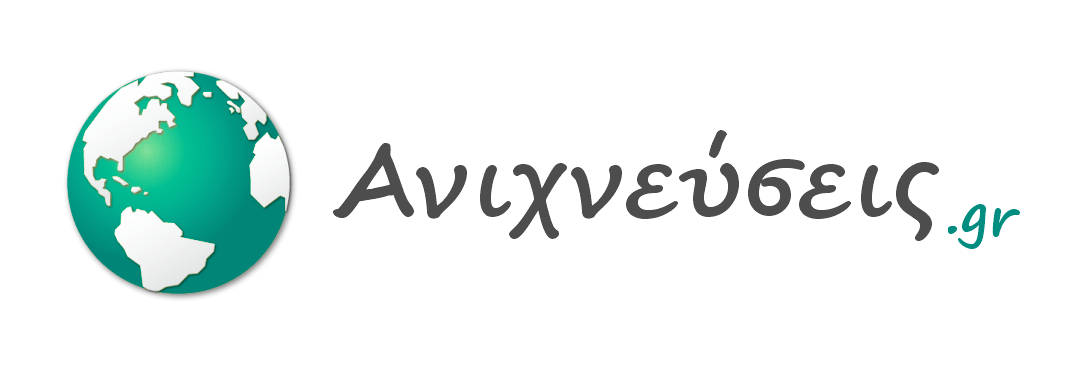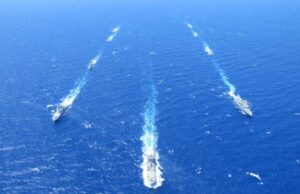
Turkish Navy has conducted Principal Naval Warfare, Anti-submarine and Amphibious Operation Exercises with the participation of 25 naval vessels in the Aegean Sea and the Eastern Mediterranean on May 27-28.
Abdullah Bozkurt
Turkey has a plan for the invasion of Greece codenamed after an 11th century Turkish military commander who ruled an independent state during the Byzantine era, secret documents have revealed.
According to a Power Point presentation prepared by the General Staff for an internal planning review, Turkey drew up a plan for a secret military operation named “TSK Çakabey Harekât Planlama Direktifi” (TSK [Turkish Armed Forces] Çakabey Operation Planning Directive). The document has a date of June 13, 2014, suggesting that it was most likely updated and finalized on that date after a review of an earlier version and is presumably still active.
The first slide from a secret Power Point presentation that shows the name of the military offensive against Greece (Parts that are not related to this news story have been blurred.):
Click to access Operation_PLanning_directives_Greece1.pdf
Another slide from the same secret document lists Turkey’s military offensive plans against Greece and Armenia with corresponding dates indicating when they were drawn up:
Click to access Operation_PLanning_directives_Greece_and_Armenia.pdf
The documents were discovered in a court case file in the Turkish capital where investigating prosecutor Serdar Coşkun, a loyalist of Turkish President Recep Tayyip Erdoğan, appears to have forgotten to remove the classified documents before submitting them to the court. They were collected from the General Staff headquarters during an investigation into a failed coup on July 15, 2016. The documents including the invasion plan for the Greece were found to have been exchanged among top commanders at the General Staff as they use a secure internal email communications system. Coşkun ordered the military to forward copies of all email messages for the previous two months including the encrypted ones, on August 1, 2016.

Ten days later, on August 11, 2016, the prosecutor assigned his trusted helper, a police officer named Yüksel Var, to collect emails from the General Staff’s internal servers and report back to him. A commission set up by military technicians under Var completed its work on February 14, 2017. In the end, the indictment filed by prosecutors Necip Cem İşçimen, Kemal Aksakal and İstiklal Akkaya in March 2017 with the Ankara 17th High Criminal Court included all the emails collected from General Staff computers. No communication was found in the emails indicating any hint of the failed coup, which many believe was a false flag operation orchestrated by Erdoğan and his intelligence and military chiefs to set up the opposition for persecution and a mass purge.
The Turkish prosecutor ordered that all copies of the emails be sent to his offce:
Click to access Serdar_Coskun_order.pdf
It was not surprising to see that Turkish planners named the military action against Greece for Çaka Bey (Tzachas in Greek), a revered name in Turkey, especially among navy people, as the man who led the first-ever Turkish expedition in the Aegean. Çaka Bey’s forces took over islands in the Aegean such as Lesbos, Samos, Chios and Rhodes as well as some territory in the Aegean coastlands in 1088-91 from the Byzantine Empire. Some in Turkey even call him the founding father of the Turkish navy.
The website of the Turkish Naval Command (Türk Deniz Kuvvetleri) lists 1081 as the date when the first modern Turkish navy was established under Çaka Bey’s rule. It states that Çaka Bey established a shipyard in Izmir, built a 50-vessel armada to venture out into Aegean waters and defeated the Byzantine navy. The Naval Museum Command has a statue portraying Çaka Bey as the first Turkish admiral in its museum in Istanbul.
The Erdoğan government has also been promoting the legacy of Çaka Bey for years. Binali Yıldırım, Erdoğan’s most trusted loyalist who had served 12 years as minister for maritime affairs before becoming prime minister and then parliament speaker, launched a campaign in 2010 to commemorate Çaka Bey’s record. During the September 2010 Maritime Culture Festivities, Yıldırım was seen displaying Çaka Bey’s maritime ship lantern (Çaka Bey Türk Denizcilik Ateşi), which was transported from Istanbul to Izmir.

The document does not have any details on the specifics of the plan other than the name and the updated date of the plan. The details of the invasion must have been marked “top secret” and as such could not be shared through the intranet system run on the email exchange servers of the Turkish military. According to a TSK directive on information security that was explained in document No. MY114-4 (B), such sensitive plans can only be transmitted through a special communications systems called the Message Document Distribution System (Mesaj Evrak Dağıtım Sistemi, or MEDAS), or Automated Messaging Forwarding System (Otomatik Mesaj Aktarma Sistemi, or OMASIS).
The Power Point document appears to have been prepared for presentation at headquarters as a contingency plan with regard to developments in Syria. The Turkish military was assessing its capabilities and troop commitments according to various planning directives in effect with respect to its neighboring countries. They wanted to maintain their offensive and deterrence capabilities on the western front while moving some troops and equipment to the Syrian border.
The review of the documents also indicates that the General Staff, which shared the emails at the outset, panicked eight months later over the possible fallout from the revelation of the sensitive documents and started sounding the alarm. The first warning letter was written on March 8, 2017 by Lt. Gen. Uğur Tarçın, head of the General Staff Communication, Electronic and Information Systems (Muhabere, Elektronik ve Bilgi Sistemleri, or MEBS). He warned the legal department of the General Staff that the documents contained secret documents about the national security of Turkey, classified intelligence reports and operations in Syria and the eastern Mediterranean. He said the documents must be kept secret and not shared with any unauthorized persons.
Lt. Gen. Uğur Tarçın’s warning about the secret General Staff documents came months later:
Click to access Ugur_Tarcin_mebs_warning.pdf
Acting on the advice of the MEBS commander, the General Staff’s deputy legal counsel Col. Aydın Seviş wrote to the Ankara 17th High Criminal Court on August 24, 2017, repeating the same concerns about the secret documents and urged the establishment of a commission to screen the documents. However, Turkish prosecutors appeared to have paid no attention to their concerns and included all the emails with their attachments of secret documents in the case file, exposing the highly classified information including the name of the invasion plan for Greece.
The documents confirms what Nordic Monitor previously reported with respect to Armenia. An operation codenamed “Altay,” which was the name assigned to the military action against Armenia in another document, was also incorporated into the case file by prosecutor Coşkun. The same operation name was listed in the Power Point presentation as well.
Col. Aydın Seviş sent a letter to the court expressing concerns about the secret military documents when they were already incorporated into the case file.
Click to access General_Staff_warning_to_court.pdf
The Erdoğan government has been ratcheting up its belligerent rhetoric against Greece since 2013, when it was rattled by major corruption investigations that incriminated Erdoğan, his family members and business and political associates. The Turkish president, backed by his nationalist and neo-nationalist allies, has been using Greece as a punching bag to create a distraction from troubles on the domestic front. His government recently publicly backed converting Hagia Sophia, currently a museum, into a mosque, sparking a huge reaction from Greece.
Turkey and Greece, two NATO allies and neighbors, are at odds over the boundaries of their territorial waters and airspace in the Aegean, where some Greek islands are lined up along Turkey’s western coasts. The delimitation of the Aegean continental shelf, a dispute that concerns Turkish and Greek rights to economic exploitation of resources on and under the Aegean seabed in an area that stretches between their territorial waters and the high seas, remains unresolved.
Turkey-Libya maritime and security deals signed with Libya’s National Accord Government (GNA) in November 2019 have also shaken up politics in the Mediterranean, with some European and other regional states launching diplomatic and military counter-offensives. The maritime agreement determines the Turkey-Libya continental shelf and exclusive economic zone (EEZ), while the security deal allows the Turkish government to deploy troops in Libya and transfer paramilitary SADAT units and jihadists from Idlib to the Mediterranean country.

The Naval Museum Command’s information on Çaka Bey, who is considered the first Turkish admiral




